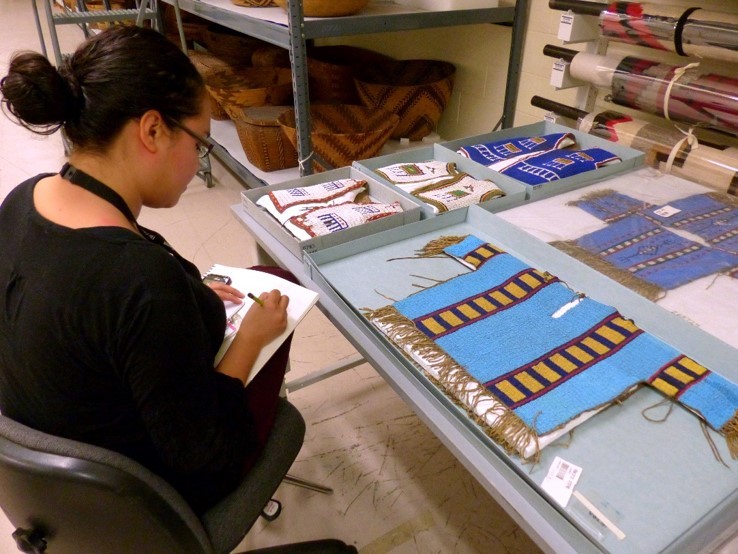Guidelines for Collaboration: IARC Leads National Trend in Collaborative Museum Work

The School for Advanced Research (SAR) is pleased to announce the publication of the Guidelines for Collaboration, theoretical and practical guides to building successful collaborations between Indigenous communities, museums, and other collecting institutions.
The Guidelines are the product of several years of critical discourse between over sixty Native and non-Native museum professionals, cultural leaders, artists, and scholars experienced in collaborative work in various institutions in the United States, Canada, and New Zealand. Available only in limited release until now, the Guidelines are already being used by internationally recognized institutions including Chicago’s Field Museum and University of California–Los Angeles (UCLA) in collaboration with the Getty Conservation Institute.
To see the Guidelines and case studies or to download the resource, visit https://guidelinesforcollaboration.info/
Today, museum stewardship of Native American collections is undergoing profound changes. As museums leave exclusionary practices behind and open their doors to the communities from which their collections originate, new models of collaborative work between Native and non-Native museum professionals, artists, cultural leaders, and scholars are emerging. Museums are already seeing how collaboration offers exciting opportunities for mutual learning. The benefits to museums and communities are clear, but both sides may be unsure about how proceed and have expressed the need for a resource guide.
Organized in two parts, the Guidelines offer principles and practical considerations for (1) museums working with Native American communities (Guidelines for Museums) and (2) Native American communities working with museums (Guidelines for Communities). A primary goal of the Guidelines for Museums is to help museums and communities build positive relationships. “The foundation of the work,” says Indian Arts Research Center (IARC) director Elysia Poon, “is trust. This is really the core to successful collaborations.” As museums open their collections to community members, the Guidelines for Museums help museum staff responsibly administer that access. The Guidelines facilitators also saw that Indigenous community members expressed interest in working with museums but were often at a loss as to how to approach institutions and navigate collections and curatorial systems. Development of a set of guiding principles thus became a priority. These two documents provide complementary perspectives and are helping to steer the development of exhibitions, the direction of collections care, and the path of education and programming in museums and other cultural institutions.


Monica Rickert-Bolter (Potawatomi/African-American) visits the North American collections at the Field Museum in January 2018 to view Lakota children’s garments and toys in preparation for illustrating a Native-authored children’s book. Photo courtesy the Field Museum.
Although the Guidelines are geared toward working with Native American communities and collections staff, they can be broadly applied to a range of communities whose cultural materials are held by museums. “It is our hope,” Smith notes, “that museums and cultural institutions will consider the Guidelines in the work that each department does. From collections care to docent training, there are concepts in the Guidelines that can improve the working relationships across all aspects of museum work.” With the completion of the Guidelines, the IARC is now developing appropriate projects with a variety of institutions and Indigenous communities. It also offers consulting support to organizations and communities that express interest in utilizing the resource.
The Guidelines project was sponsored by the IARC at SAR. Additional support was provided by the Smithsonian Institution’s National Museum of the American Indian (NMAI). “SAR takes pride in having played a leading role in this ground-breaking project,” says Michael F. Brown, SAR’s president. “The work pioneered by the IARC exemplifies our mission of furthering collaborative, equitable research with Indigenous peoples and other traditional communities worldwide.”
- Landis Smith (Guidelines co-facilitator), Collaborative Conservation Programs consultant, IARC, SAR; projects conservator, Museums of New Mexico Conservation.
- Brian Vallo (Acoma Pueblo, Guidelines co-facilitator), former IARC director, SAR.
- Cynthia Chavez Lamar (San Felipe Pueblo/Tewa Hopi, Guidelines co-facilitator), assistant director of collections, Smithsonian’s NMAI; former IARC director, SAR.
- Jim Enote (Zuni Pueblo), former director, A:shiwi A:san Museum and Heritage Center; CEO, Colorado Plateau Foundation.
- Martina Dawley (Navajo/Walapai), assistant curator of Native American relations, Arizona State Museum.
- Marian Kaminitz, director of conservation, NMAI.
- Kelly McHugh, objects conservator, NMAI.
- Nancy Odegaard, head of preservation, Arizona State Museum.
- Ellen Pearlstein, professor/conservator, Interdepartment Program in the Conservation of Archaeological and Ethnographic Materials, UCLA.
About the School for Advanced Research (SAR): Founded in 1907, the School for Advanced Research (SAR) is one of North America’s preeminent independent institutes for the study of anthropology, related social sciences, and humanities. SAR is home to the Indian Arts Research Center, one of the nation’s most important Southwest Native American art research collections. Through prestigious scholar residency and artist fellowship programs, public programs, and SAR Press, SAR advances intellectual inquiry in order to better understand humankind in an increasingly global and interconnected world. Additional information on the work of our resident scholars and Native American artists is available on the SAR website, www.sarweb.org; on Facebook, facebook.com/schoolforadvancedresearch.org/; on Twitter, @schadvresearch; and on Instagram @schoolforadvancedresearch.